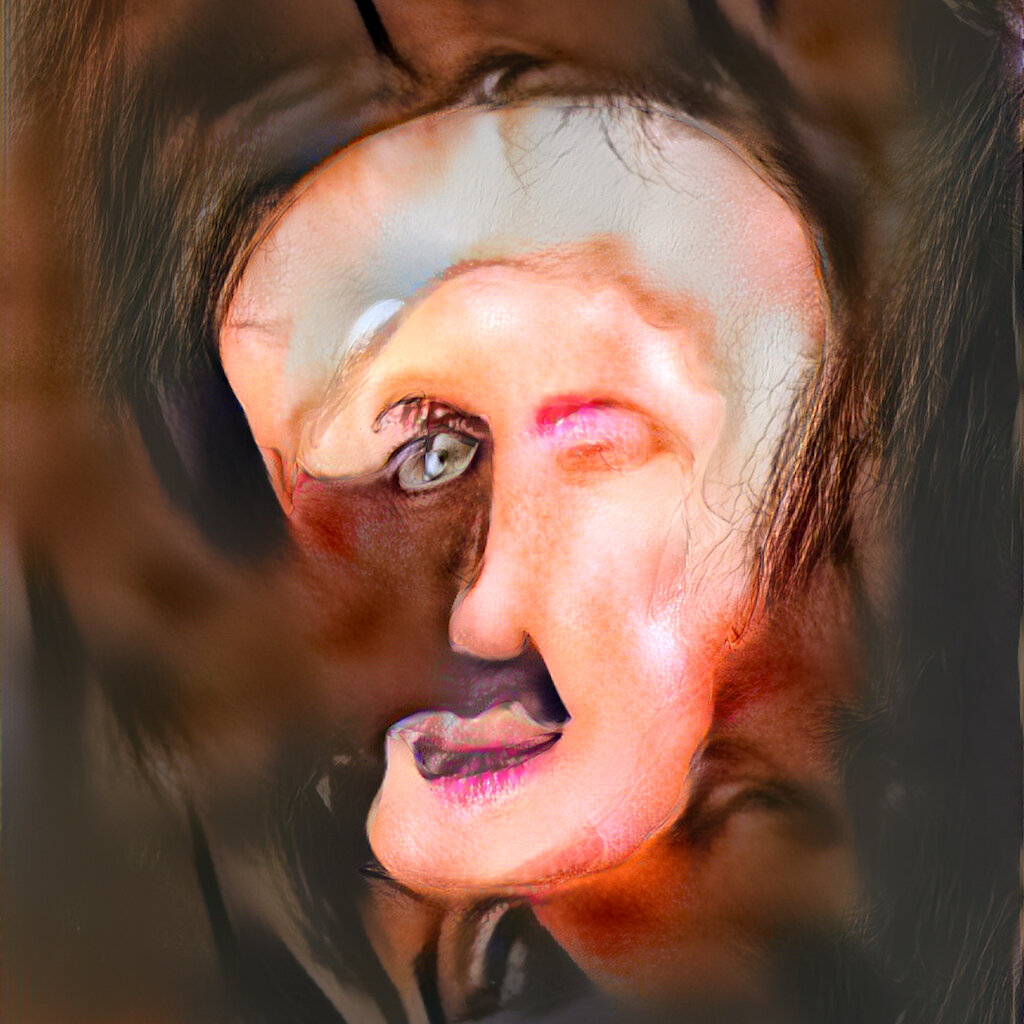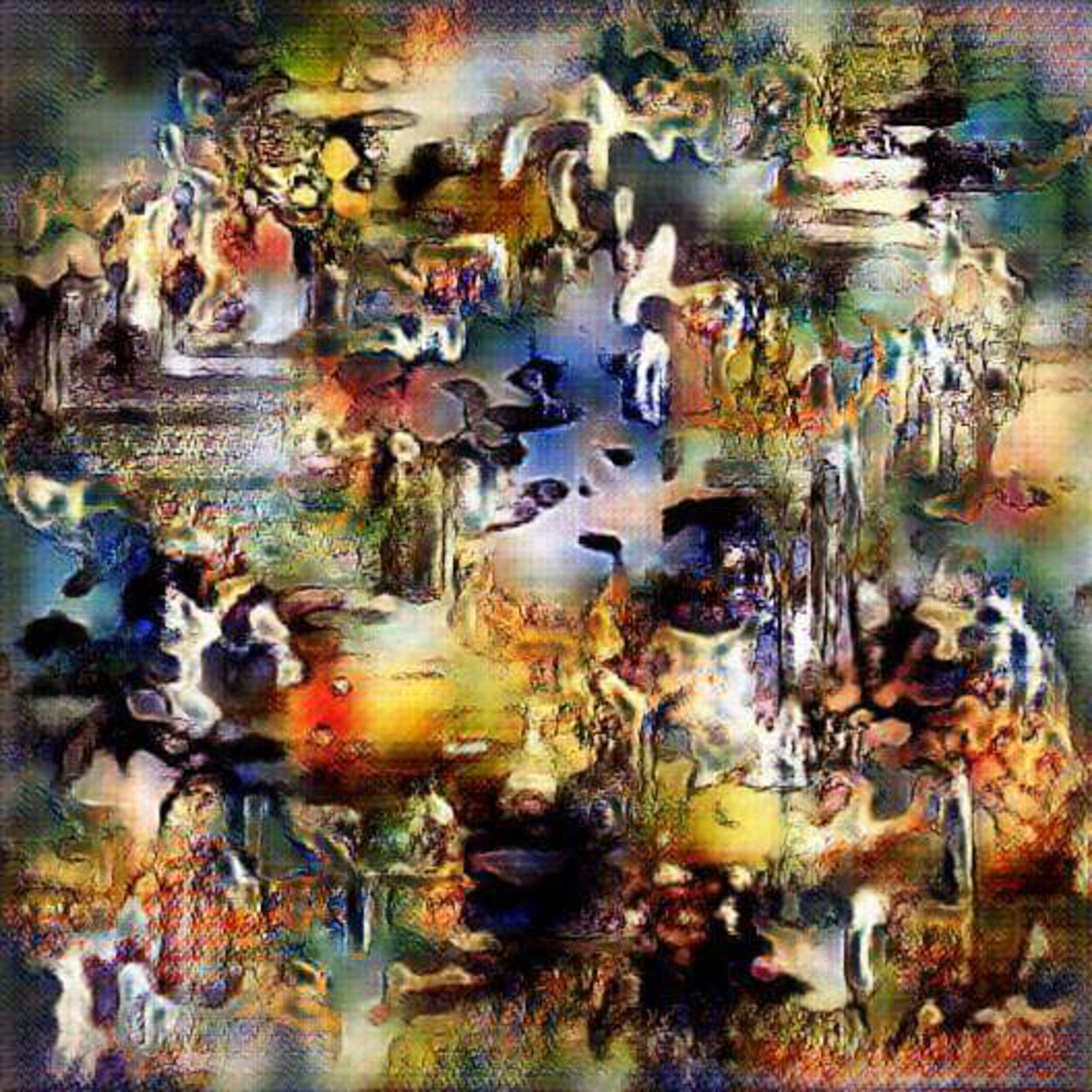As Byzantine art depicted the transcendent time and place and it was deeply intertwined with Christian Orthodox faith, it was the exact opposite of classic naturalistic aesthetics. As Ernst Kitzinger, a historian of Byzantine art, stated there was a "dialectic" between "abstract" and "Hellenistic" tendencies in late antiquity. Symbolism was more important than an accurate representation or correct perspective. The figures tended to "hover" in space, occupying symbolically the transcendent rather than the three-dimensional space.
A deep convolutional GAN (DCGAN) was trained on a dataset of Byzantine iconography, which contained hundreds of icons of Christ, Madonna, and various saints. The AI system generates then icons of religious content, evolving the Byzantine style of abstract depiction, where the goal is to represent some "quality" of the meaningful content rather than naturalistic forms. The result is mystic forms of transcendental aethereal attributes, or perhaps an AI interpretation of Byzantine religious figures.













